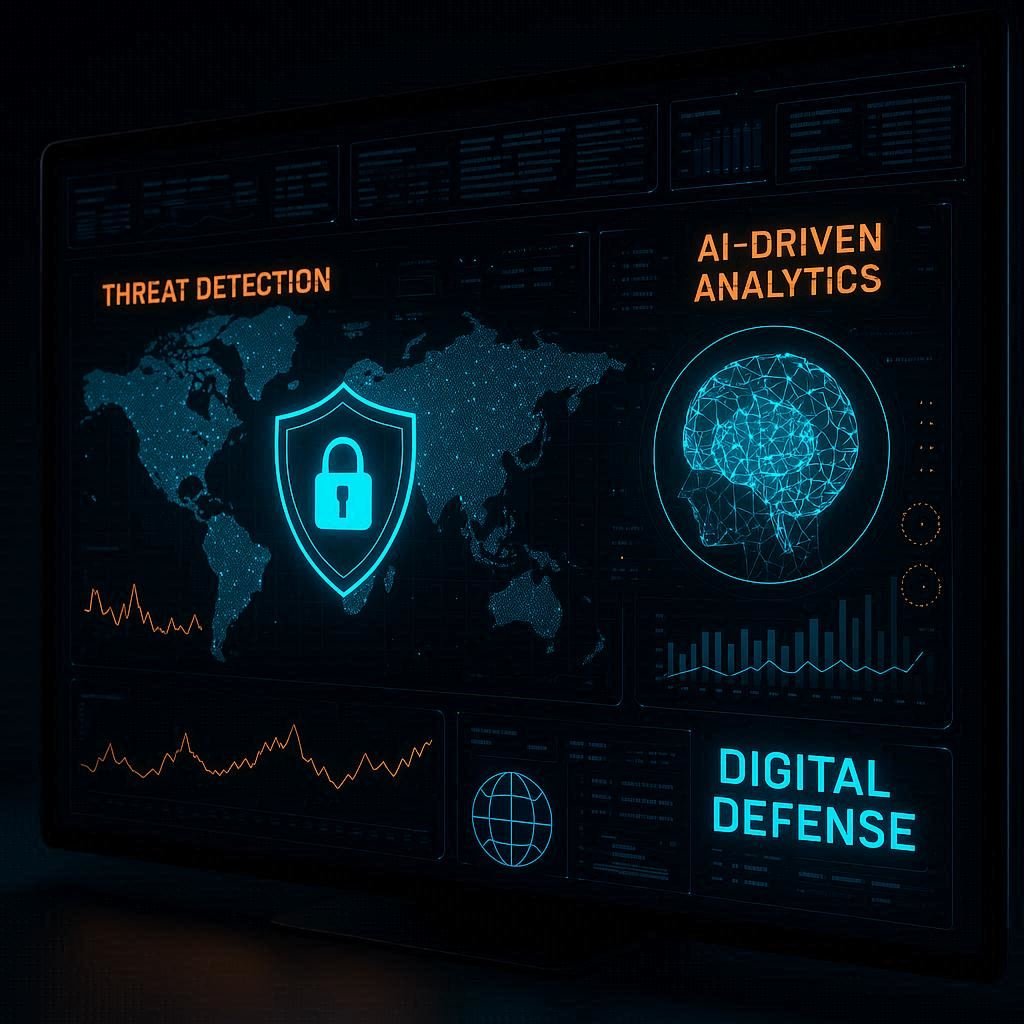Top Cybersecurity Threats in 2025 Businesses Should Prepare For
Introduction
The digital landscape is evolving rapidly, and with every advancement in technology comes a new wave of cyber risks. As organizations rely more on cloud computing, remote work tools, and artificial intelligence, the number of potential vulnerabilities continues to grow. Businesses that fail to prepare for these changes risk data breaches, financial loss, and reputational damage. Understanding the cybersecurity threats in 2025 is essential to building resilient systems and safeguarding critical information.
Below are the most pressing cybersecurity threats that businesses should watch for in 2025 and beyond.
1. AI-Driven Cyberattacks
Artificial intelligence has transformed cybersecurity—both for defense and for offense. In 2025, cybercriminals are increasingly using AI to automate attacks, create sophisticated phishing campaigns, and identify vulnerabilities faster than human hackers ever could.
AI-driven malware can adapt to different environments, making it difficult for traditional security tools to detect. Additionally, deepfake technology powered by AI can be used to impersonate executives or employees, leading to successful social engineering attacks.
How to prepare:
Businesses should implement AI-powered defense systems, adopt behavioral analytics, and train employees to identify signs of deepfake or AI-generated scams.
2. Ransomware Evolution and Double Extortion
Ransomware remains one of the most damaging cybersecurity threats in 2025. Attackers are no longer satisfied with encrypting files—they now use double extortion tactics, stealing sensitive data before locking systems and threatening to release it publicly if payment is not made.
Small and medium-sized businesses are especially vulnerable because they often lack advanced cybersecurity infrastructure.
How to prepare:
Regularly back up critical data, store copies offline, and use endpoint protection tools. Establish a strong incident response plan and employee awareness training to minimize the damage from ransomware.
3. Cloud Security Misconfigurations
The shift to cloud computing has opened new doors for scalability but also created new vulnerabilities. Many data breaches in 2025 are expected to result from misconfigured cloud settings, weak access controls, and poor identity management.
Attackers target misconfigured databases, exposing sensitive data such as customer information or intellectual property.
How to prepare:
Implement strict access controls, conduct regular cloud audits, and ensure compliance with security frameworks like ISO 27001 or SOC 2. Use cloud-native security tools to monitor and fix vulnerabilities in real time.
4. Insider Threats and Human Error
Not all cybersecurity risks come from external attackers. Insider threats—whether malicious or accidental—remain a leading cause of breaches. In 2025, hybrid work environments and increased employee mobility make it harder to monitor data access and prevent leaks.
Phishing emails, weak passwords, and accidental data sharing are still major risk factors.
How to prepare:
Deploy user behavior analytics (UBA) tools to detect unusual activity. Enforce least-privilege access policies and conduct regular cybersecurity training sessions to minimize human error.
5. Supply Chain Attacks
In recent years, supply chain attacks have grown in frequency and sophistication. In 2025, these attacks are expected to become even more complex, targeting software providers, hardware manufacturers, and service vendors to infiltrate trusted networks.
Such breaches can have far-reaching consequences, impacting hundreds of companies at once.
How to prepare:
Conduct vendor risk assessments and require third-party partners to comply with your security standards. Implement zero-trust architecture to ensure continuous verification of access, regardless of the source.
6. Internet of Things (IoT) Vulnerabilities
The rise of IoT devices—from smart office equipment to industrial sensors—has introduced new entry points for attackers. Many of these devices lack strong security features, making them easy targets for exploitation.
In 2025, cybercriminals may use compromised IoT devices to launch large-scale distributed denial-of-service (DDoS) attacks or gain access to internal networks.
How to prepare:
Segment IoT networks from critical systems, update device firmware regularly, and disable unused features. Choose vendors that prioritize security in device design and maintenance.
7. Quantum Computing Threats
Quantum computing promises enormous computational power—but it also poses a potential threat to encryption. Although mainstream quantum attacks are still years away, cybersecurity experts predict that 2025 will see early attempts to exploit quantum capabilities to break traditional cryptography.
Businesses relying on outdated encryption methods could find their data exposed to “harvest now, decrypt later” strategies.
How to prepare:
Adopt quantum-resistant encryption algorithms and work with security providers who are investing in post-quantum cryptography solutions.
8. Phishing and Social Engineering 2.0
Phishing remains one of the oldest and most effective cybersecurity threats in 2025, but it is now more advanced than ever. Attackers use AI to craft personalized messages that mimic legitimate communications. Social engineering tactics also extend beyond email to SMS, chat apps, and even video calls.
How to prepare:
Use advanced email filtering tools and employee awareness programs to spot and report suspicious messages. Implement multi-factor authentication (MFA) to reduce the risk of unauthorized access.
9. Critical Infrastructure Attacks
In 2025, industries like healthcare, energy, and transportation continue to be prime targets for cyberattacks. Hackers may aim to disrupt essential services or cause large-scale damage. These attacks often involve state-sponsored groups, making them particularly dangerous and difficult to prevent.
How to prepare:
Implement network segmentation, update legacy systems, and follow government-recommended cybersecurity standards for critical infrastructure protection.
10. Data Privacy and Regulatory Compliance Risks
As governments introduce stricter data protection laws, noncompliance has become a serious cybersecurity risk. Mishandling personal data can lead to hefty fines, reputational damage, and legal consequences.
How to prepare:
Stay informed about global privacy regulations like GDPR, CCPA, and emerging data laws. Implement clear data governance policies and ensure proper encryption of customer data.
Conclusion
The cybersecurity threats in 2025 reflect an increasingly interconnected digital world where innovation and risk evolve side by side. From AI-driven attacks to cloud vulnerabilities and insider threats, businesses must adopt proactive defense strategies to stay secure.
Cyber resilience is no longer optional—it is essential for business continuity, trust, and long-term success. By investing in advanced security tools, continuous monitoring, and employee education, organizations can face the future of cybersecurity with confidence.




Comments are closed